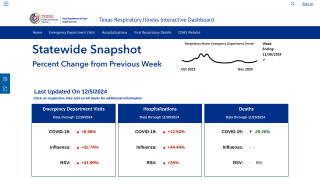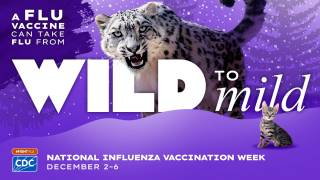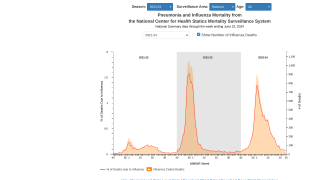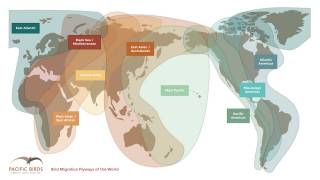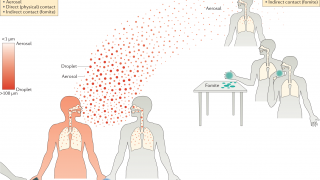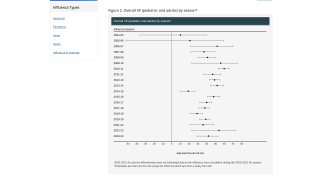Mid-Summer Blues Ignoring Flu Concerns

As vacationers sit poolside enjoying the hazy, lazy summer days, the flu viruses are planning their return to the USA during the Fall.
Flu season is a recurring event, primarily hitting the hemispheres in their fall and winter seasons.
During the cooler temperatures, influenza cases increase roughly tenfold or more, reports the World Health Organization (WHO).
And, the influenza activity can sometimes be predicted.
While the beginning of activity in each flu season varies by location, in any specific location, minor epidemics usually take about 3 weeks to peak, and another 3 weeks to significantly diminish.
Each annual flu season is normally associated with a major influenza virus subtype. The associated subtype changes each year, due to development of immunological resistance to a previous year's strain, and mutational changes in previously dormant viruses strains.
Three influenza virus families, A, B, and C are the main agents that cause influenza.
For the 2018 flu season in the southern hemisphere, the WHO suggests influenza vaccines focus on the following viruses:
- an A/Michigan/45/2015 (H1N1)pdm09-like virus;
- an A/Singapore/INFIMH-16-0019/2016 (H3N2)-like virus; and
- a B/Phuket/3073/2013-like virus.
Additionally, the WHO recommended that quadrivalent vaccines containing two influenza B viruses contain the above three viruses and a B/Brisbane/60/2008-like virus.
The WHO July 9, 2018 report found the following flu trends in the temperate zones of the southern hemisphere:
In South America:
- In Chile, influenza-like illness (ILI), SARI levels and influenza detections were reported above the seasonal threshold, with influenza A(H3N2) viruses predominating,
- In Paraguay, ILI levels were above seasonal thresholds, but percent positivity for influenza remained low; SARI levels and percent positivity of respiratory syncytial virus (RSV) remained elevated,
- In Brazil, influenza percent positivity was reported as decreased with detections of predominantly influenza A(H1N1)pdm09 and A(H3N2) viruses,
- In Uruguay and Argentina, influenza detections remained low while RSV activity increased,
- In Bolivia, SARI levels and detections of influenza A(H1N1)pdm09 and B viruses were reported as decreased while RSV activity remained high,
- Influenza activity of predominantly A(H1N1)pdm09 virus and respiratory illness indicators remained elevated in Colombia and Peru (particularly in the under 5 age group).
In Oceania:
- Influenza activity remained at inter-seasonal levels in Australia and New Zealand,
- New Caledonia continued to report detections of predominantly influenza B virus Yamagata lineage,
- Influenza activity of predominantly A viruses was reported in French Polynesia.
In Central America and the Caribbean:
- In the Caribbean, low detections of predominantly influenza A viruses continued to be reported. Respiratory syncytial virus (RSV) activity remained low in the region,
- A sharp increase of SARI levels was reported in Suriname in recent weeks and was associated with co-circulation of other respiratory viruses among the <5 years-of-age population,
- In Central American countries, influenza activity was low in general with the exception of Guatemala where influenza A (H1N1)pdm09 virus detections remained elevated.
In Africa:
- In Western Africa, detections of predominantly influenza B viruses of both lineages were reported in Côte d’Ivoire and influenza A(H1N1)pdm09 in Ghana,
- In Middle and Eastern Africa, influenza activity was low in reporting countries Cameroon, Central African Republic, Madagascar and the United Republic of Tanzania.
In Asia:
- In Southern Asia, influenza activity remained low across countries reporting in this period. In the Maldives, influenza A(H3N2) virus detections were reported as decreased.
- In South East Asia, influenza activity remained low across reporting countries.
The Global Influenza Programme monitors influenza activity worldwide and publishes an update every two weeks. The updates are based on available epidemiological and virological data sources, including FluNet (reported by the WHO Global Influenza Surveillance and Response System) FluID (epidemiological data reported by national focal points) and influenza reports from WHO Regional Offices and Member States.
Our Trust Standards: Medical Advisory Committee



